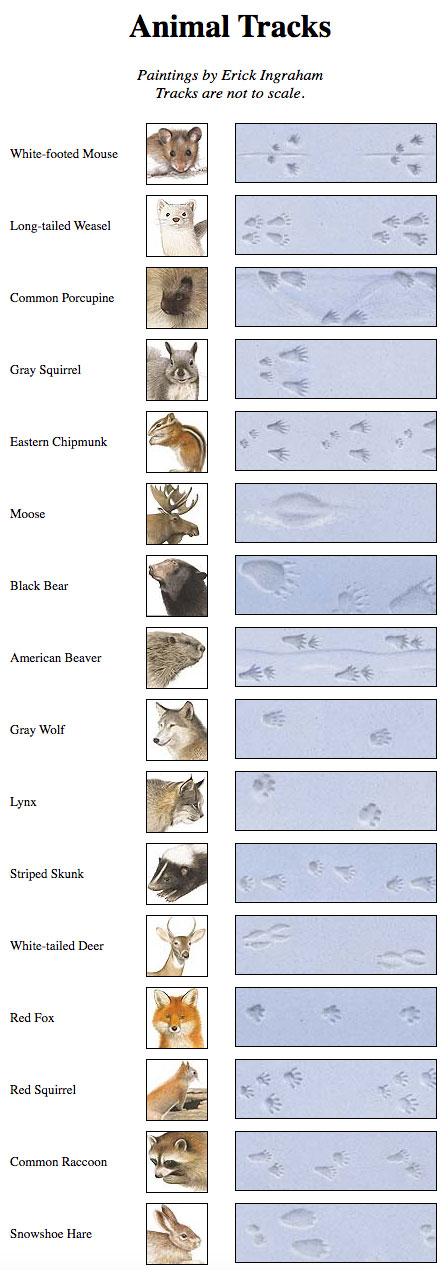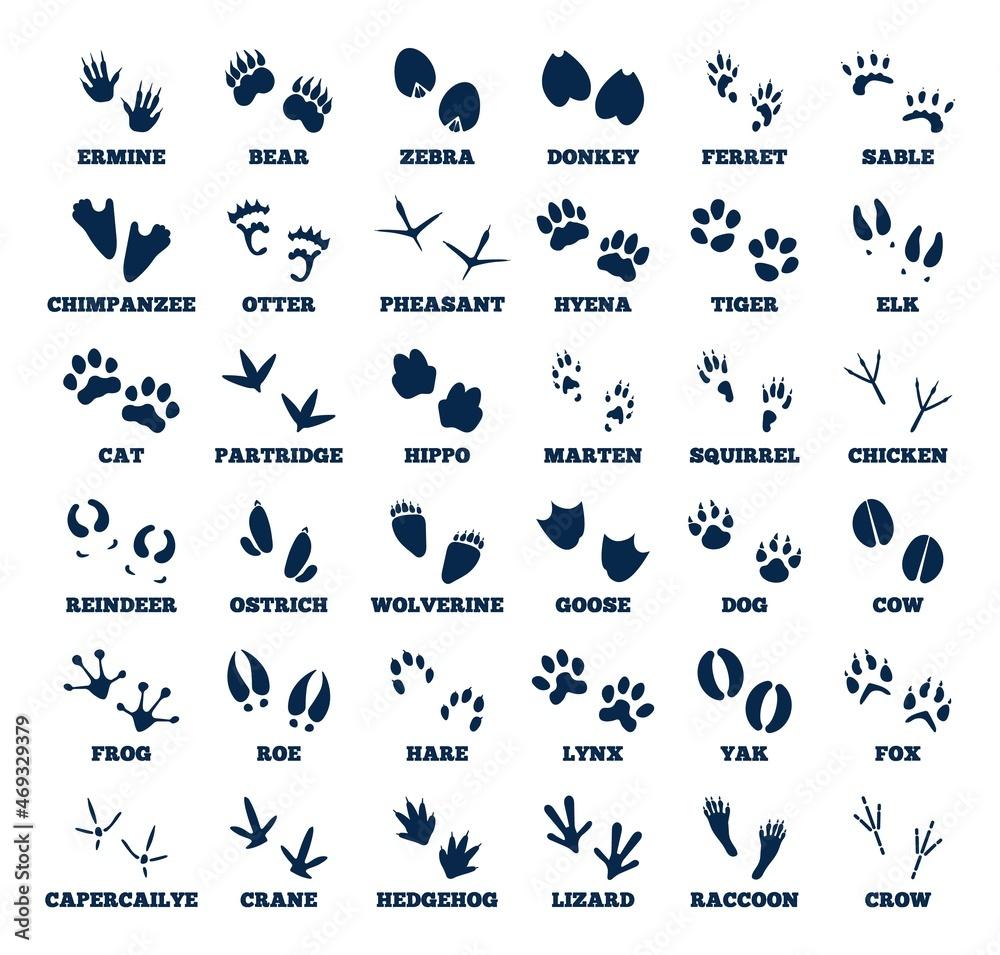As the first light of dawn breaks over the horizon, the world stirs awake, cloaked in a gentle veil of mist. In this quiet moment, the secrets of nature begin to unfold. Beneath the towering trees and alongside the babbling brooks, the earth tells its stories in the most subtle of ways—through the delicate imprints left behind by its inhabitants. Each footprint, whether a dainty paw or a stout hoof, serves as an invitation to explore the intricate tapestry of life that thrives in the wild. “Discovering Nature’s Clues: A Guide to Animal Tracks” aims to unravel the mysteries woven into these imprints, offering a pathway for curious minds to connect with the vibrant ecosystems around them. Whether you’re a seasoned naturalist or an inquisitive wanderer, understanding the language of animal tracks opens doors to a deeper appreciation of the wildlife that shares our planet. Join us as we embark on a journey to decipher these natural clues, revealing the stories of the creatures that roam beneath the stars.
Table of Contents
- Understanding the Basics of Animal Track Identification
- Exploring the Unique Features of Common Animal Tracks
- Practical Tips for Track Observation in Various Habitats
- Preserving the Environment While Tracking Wildlife
- The Way Forward
Understanding the Basics of Animal Track Identification

Identifying animal tracks is like piecing together a captivating story told by nature itself. Each print on the soil carries unique features that can reveal the identity of the animal and even its behavior. Start by focusing on the size and shape of the tracks. Take note of whether the prints display claws, the number of toes, and the spacing between footprints. For instance, a small track with pointed claws might suggest a weasel, while a larger, rounded print could indicate a deer. Additionally, observing the gait pattern can further enhance your identification skills; animals walk, trot, or bound in distinctive ways that leave different impressions in their surroundings.
It’s also essential to consider the context of the tracks. Factors such as the habitat (wooded area, open field, or wetland) and weather conditions can influence the visibility of tracks. For example, wet ground can enhance the depth of prints, making them easier to distinguish. Furthermore, analyzing the patterns can unveil animal behavior, like foraging or migration. When documenting your findings, use a simple table to catalog the most common animal tracks in your area, focusing on features like species, habitat, and track size. This tangible reference will aid in your adventures of discovering nature’s clues.
| Species | Habitat | Track Size |
|---|---|---|
| White-tailed Deer | Forests, fields | 2-3 inches |
| Red Fox | Wooded areas | 2-3 inches |
| Raccoon | Near water bodies | 3-5 inches |
Exploring the Unique Features of Common Animal Tracks

Animal tracks are fascinating windows into the secret lives of wildlife, allowing us to piece together stories of their behavior and movements. Each type of track tells a different tale, and recognizing these unique features can elevate our understanding of the ecosystem around us. For instance, the tracks of a white-tailed deer are elongated with a distinct heart shape at the back, often found near woodlands and meadows. In contrast, the clawed and firmly imprinted tracks of a bobcat reveal its stealthy nature, with a unique arrangement of toes that can hint at its hunting patterns. Observing these distinctions not only enhances our tracking skills but also deepens our appreciation for the intricate web of life we coexist with.
To further illustrate the diversity of animal tracks, here’s a comparison of some common species one might encounter:
| Animal | Track Characteristics | Common Habitats |
|---|---|---|
| Fox | Small, pointed toes; oval shape | Forests, grasslands |
| Bear | Large, round with claw marks; broad paws | Mountains, wilderness areas |
| Squirrel | Tiny, with four distinct toes; littered | Urban parks, forests |
By closely examining these unique features, nature enthusiasts can effectively identify tracks and the stories they tell. Beyond mere footprints, these impressions can lead to a greater understanding of seasonal behaviors, feeding habits, and even the social dynamics of the wildlife inhabiting our surroundings. Embracing the art of tracking transforms a simple walk in the woods into an adventure filled with discovery and insight.
Practical Tips for Track Observation in Various Habitats
When venturing into a variety of habitats, honing your observation skills can significantly enhance your ability to identify tracks. In wooded areas, look for signs of wildlife that often leave prints in the soft earth or on leaves. Pay attention to deer tracks, which typically have two elongated hooves, or rabbit prints, characterized by their small, round shape. Other notable indicators include droppings and scratches on tree bark, which can reveal the presence of larger animals like bears. Be sure to scan the area for disturbed soil, which may suggest burrowing creatures or recent movement along game trails.
In wetlands, the challenge brings a different perspective. Here, the ground may be mushy or waterlogged, making track identification pivotal. Focus on identifying amphibian tracks, particularly from species like frogs or salamanders, which leave behind subtle impressions. Be observant for fish movements, indicated by surface breaks or disturbed vegetation along the banks. Using tools such as a field guide can help in recognizing species specific to these environments. In addition, consider jotting down your observations in the following table to illustrate patterns you notice over time:
| Habitat | Common Tracks | Signs of Presence |
|---|---|---|
| Wooded Areas | Deer, Fox, Rabbit | Scratches, Droppings |
| Wetlands | Frogs, Birds, Fish | Disturbed Vegetation, Surface Breaks |
| Grasslands | Rodents, Snakes | Burdens, Burrows |
Preserving the Environment While Tracking Wildlife
As we delve into the art of tracking wildlife, it’s vital to align our passion for discovery with a commitment to conservation. Our explorations should enhance our understanding of animal behavior and promote the health of their habitats. By practicing responsible tracking, we contribute to preserving the ecosystems we love by minimizing our footprint. Keeping a respectful distance, following established paths, and being mindful of the impact we have in natural areas are essential steps to ensure that our wildlife encounters do not disturb the balance of their environment.
Adopting sustainable practices while engaging in tracking activities can also enhance our experiences and knowledge of the local fauna. Here are some key approaches to ensure that our passion for tracking fosters environmental stewardship:
- Leave No Trace: Always clean up after yourself and avoid disturbing natural features.
- Track Responsibly: Avoid unnecessarily trampling on vegetation or habitats.
- Educate Others: Share your knowledge about the significance of preserving wildlife and their environments.
- Use Eco-Friendly Gear: Choose equipment and materials that are biodegradable or made from sustainable resources.
The Way Forward
As we conclude our exploration of animal tracks, it becomes clear that nature speaks to us in a language woven through the very ground we walk upon. Each footprint narrates stories of survival, movement, and the rhythms of wildlife that often go unnoticed. Just as a detective meticulously examines a scene for clues, you too can sharpen your observations and uncover the mysteries that lie just beneath the surface of our natural world.
In the quiet of a forest or the expanse of an open field, the impressions left by animals beckon us to delve deeper into their lives and habitats. By taking the time to study these tracks, we not only enhance our understanding of the ecosystem around us but also foster a deeper connection with the environment. So, the next time you venture outdoors, keep your eyes peeled for these signs of animal life—each track is an invitation to engage with nature in a new and meaningful way.
Armed with this guide, may your journeys lead you to discoveries that inspire curiosity and appreciation for the intricate web of life that surrounds us. Whether you are a seasoned naturalist or a curious newcomer, remember that every step taken in nature is a step closer to unraveling its many secrets. Happy tracking!



